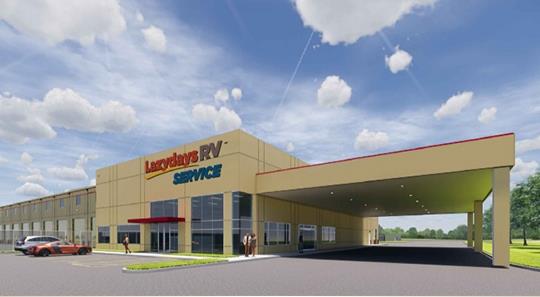
By Joseph Garnett, Jr.
December 17, 2015
Often many RV users get caught up in the beauty of the exterior and the amenities of their motor homes, overlooking its driving aptitude. RVers with more experience will say that one of the most important parts of the coach is the RV chassis. With the right chassis, you will get the most enjoyment from your investment. However, most buyers still make their purchases based on the looks of the exterior and inside amenities first and then just accept the chassis that comes with what they have chosen.
However, in recent years, there has been a trend shifting to RVers who want to understand the various RV chassis. Many RV manufacturers buy their chassis from Workhorse, Freightliner or Spartan. Purchasing the chassis allows the manufacturers to concentrate mainly on building the housing of the motor home. Some manufacturers build their own chassis. Either way, various floorplans can be offered on the chassis.
When doing your research on the various designs, identify the two most critical chassis components: wheel cut and wheelbase. These two elements, when combined, determine where to start turning, so that the rear of your RV can clear a corner or any obstacle beside it.
Lazydays Driver Confidence Course expert Bob Bergeron explains that the wheel cut is the angle the wheels will turn in either direction, ranging from 45 – 60 degrees. The higher the wheel cut angle, the smaller the turning radius will be. An RV with a 55 – degree angle will turn in a smaller circle than one that is 45 degrees.
Wheelbase is the distance between the center of the steer axle and the center of the drive axle. It is measured in inches. The longer the wheelbase, the more room is required to turn. This is because the pivot point, or drive axle, is farther away from the steering axle.
Test-driving is essential when you are considering a purchase. If you are planning to drive mostly on the highway, you will probably need a chassis that performs differently than when driving on back roads and main streets. RV chassis aren’t just tires and framework. They help provide years of comfort and enjoyment. So, do your homework when you decide to purchase that next motor home. And remember, if you are coming to Florida, the Lazydays Driver Confidence Course will help you tremendously.
Bergeron also says that the farther apart your front and rear tires are, the more you have to wait to turn in an intersection.
“You cannot drive your motorhome like you have been driving your car for years,” Bergeron says. “The front and rear tires take a different path when making turns, which affects how you manipulate the turn.”
Most new RV owners aren’t aware of the roles of the RV chassis components and how they affect the vehicle’s performance. Some owners have traded in their original purchases for another RV with a more suitable chassis that makes it easier for them to drive.
If you wish to take a driver's training course taught by Bob Bergeron, visit the Lazydays Tampa location to learn in a classroom setting, as well as, practicing driving your own newly-purchased RV or luxury motorhome or one that you have had for years.
Share Your Experiences With Us
The RV Authority welcomes your input. If you have an idea for a blog article or would like to write and submit an article about your RV adventures, please click here to email us your suggestions or questions.



